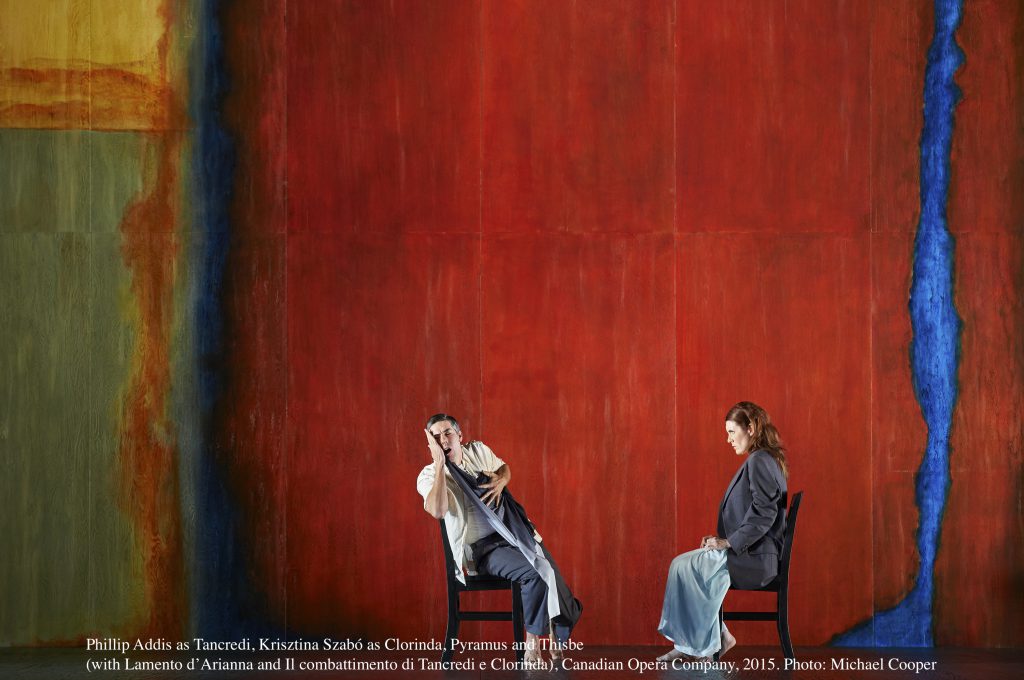1608. Opera innovator Claudio Monteverdi unveils his latest contribution to the budding art form, L’Arianna. Commissioned by the Duke of Mantua, to celebrate his son’s wedding, the fevered score is rushed to completion in little more than two months. With libretto by esteemed Florentine poet, Ottavio Rinuccini, Monteverdi’s sorrowful tale retraces Ovid’s classic account of the Cretan princess Ariadne’s cruel abandonment by her lover, Theseus, after assisting him to slay the Minotaur. The performance is well received by the discerning Gonzaga court but fails to achieve the instant popularity of the composer’s blazing Orfeo premiered the previous year. Following its sole revival in Venice 30 years later, L’Arianna, the opera, vanishes, manuscript lost. But a fragment endures, a remarkable extended recitative, the legendary Lamento d’Arianna, published not as a solo but in a collection of madrigals.
1624. Two decades after L’Arianna’s first appearance, Monteverdi fashions an even more daring piece of musical theatre, a 16-verse dramatic cantata entitled Il combattimento di Tancredi e Clorinda to be performed at Carnivale. Sung and acted before an audience of cultured Venetian nobles, the tempestuous scena drammatica is an audacious experiment, an attempt to evoke the rhythms and tone of archaic Greek tragedy. Plucked verbatim from Renaissance poet Torquato Tasso’s ubiquitous Crusader epic, Gerusalemme liberata, Monteverdi’s violent vignette details a battle between two savage foes as described by an omniscient narrator. The Christian knight Tancredi ultimately kills the Saracen heroine Clorinda, never suspecting beneath her masculine armour that she is the alluring maiden he has come to love. The work, essentially intended as a one-off, is seldom produced as a dedicated stagework again.
1983. Quebec-born composer Barbara Monk Feldman encounters a painting by French Baroque artist Nicolas Poussin while visiting the Städelsches Kunstinstitut in Frankfurt. The moody canvas featuring a pair of figures highlighted beneath a black, lightning-streaked sky, Stormy Landscape with Pyramus and Thisbe, leaves a searing impression. 26 years later, the raw elemental image is reincarnated as the spiritual inspiration for her dark, one act musical psychodrama, Pyramus and Thisbe, a veiled, reductive version of the story of the two prototypical star-crossed lovers struck down by fate.
Presenting all three disparate pieces as a continuum, the Canadian Opera Company defies mainstage convention, stitching together vivid chapters of opera history to form an uninterrupted 80-minute theatrical panorama. Individually, the snapshots are compelling, but, however audacious General Director Alexander Neef’s programming, taken together, Arianna, Tancredi and Clorinda, Pyramus and Thisbe form a blurry group portrait.
It is tempting to define the two Monteverdi works in terms of subtextual relevance — brutalization of the defenceless in the case of Lamento d’Arianna, a vicious battle for sexual domination as represented by Tancredi e Clorinda. There is, however, a great deal more at work here, not the least of which revolves around the shattering of outdated ideals and beliefs. How that binds the two selections to the final offering of the evening, is far from obvious. Isolating a single overarching theme common to all three featured pieces is a highly precarious intellectual proposition weighted with risky subjectivity. Arianna and Tancredi and Clorinda simply feel misplaced.
The centrepiece of the quasi operatic triptych and, in many ways, the only element with a clear sense of belonging is the third instalment in director Christopher Alden’s minimalist trilogy, Pyramus and Thisbe. This, the first Canadian opera produced by the COC since 1999, is what we have come to see. The production is a chaotic one, sharply expressive at times, even resonant but fundamentally unfocused.
Despite its anachronistic 20th century opera noir stylings, doubtless a holdover from the time it was written, Pyramus and Thisbe is framed by an overtly optimistic narrative, albeit tenuous. The ancient story, reshaped and distilled, begins in mid-action.
Thisbe is dead or so Pyramus thinks. Her lifeless form may be a vision, an hallucination, a nightmare. The only evidence of her passing, fact or fiction, is Thisbe’s body lying outstretched on the ground before him. And the image of a prowling lion. Horrified and disoriented, Pyramus hangs himself. Thisbe stirs and rises. She has not been killed by the wild beast as Pyramus believed. Her physical existence is illusory, all part of “this dream of love”. Reaching out to Pyramus in grief and yearning, the strength of their love eternal, Thisbe steps into the infinite darkness, joining him in death.
To his credit, Alden does solid work evoking both the intimacy and expanse of Monk Feldman’s spare, gothic tragedy, confining his two principals to a series of tightly controlled playing areas while channelling the flow of a prodigious 16-voice chorus upstage. Designer Paul Steinberg’s towering panels of faux Rothko colour fields, regrettable clumsy pastiches questionably appropriated, dwarf the players, an acknowledgement, perhaps, of the composer’s oversized abstract expressionist values. Certainly the non-representational, non-literal aspects of setting and music are much in evidence. A discussion of story and staging provides little in the way of access to this frosty, defiantly impassive piece.
Textually, Pyramus and Thisbe is relentlessly epigrammatic. Fragments from the writings of American Southern realist William Faulkner, 16th century Spanish mystic St. John of the Cross, German existential philosopher Karl Jaspers, modernist poet Rainer Maria Rilke lend an air of mystery and metaphor. “Anticipate every farewell as if it has already happened.” The flood of enigmatic pronouncements, stimulating at first, ultimately proves wearisome. Any connection to the sung/spoken word soon dissolves.
Seen from the musical side of the operatic experience, conductor Johannes Debus, leading from the harpsichord during the Monteverdi, extracts considerable impact from all three items on the program although rhythms and harmony during the pair of early Baroque works tend not to be as emphatic as might be wished. The Canadian Opera Company Orchestra, nimble and versatile as it may be, lacks the finesse and sparkle of a dedicated period ensemble. Pyramus and Thisbe, on the other hand, is given an admirably delicate, rounded performance. Monk Feldman’s layered, elemental score reveals pronounced traces of John Adams and Benjamin Britten, the former with his scrupulous tonality and large scale choral constructs juxtaposed with the evocative sound painting of the latter. Distant echoes of the Sea Interludes from Peter Grimes are heard more than once. Debus and players tease out every palpable nuance.
Singing the taxing triple roles of Arianna, Clorinda and Thisbe, mezzo-soprano Krisztina Szabó brings characteristic strength and grace to a diverse range of characterization. Opening the evening with Monteverdi’s illustrious lament, the always exciting, supremely sensitive singer actor, increasingly known for her fearless championing of contemporary repertoire, reveals a very 21st century Baroque sensibility. Szabó electrifies, tearing into the first line, Lasciatemi morire (“Let me die”), one of the earliest examples of operatic motif, with vicious emotion, a marked contrast to her more more organic and circumspect Thisbe.
Appearing as both Tancredi and Pyramus. with a non-singing presence in Lamento d’Arianna, baritone Phillip Addis commands attention, physically ferocious, vocally honed. Tenor Owen McCausland as the Narrator charges Monteverdi’s raw, untamed Il combattimento di Tancredi e Clorinda with feral ferocity.
The Canadian Opera Company Chorus brings much needed vocal dimension to Monk Feldman’s chamber opera, greatly heightening its otherwise perilously flat musical arc.
Just as there is no meaningful way to discuss this three-part presentation as coherent musical theatre, neither is there any useful way of summing up. Lamento d’Arianna, Il combattimento di Tancredi e Clorinda, and Pyramus and Thisbe are ultimately distinct concert pieces, each intriguing, but not all equally effective musically and dramatically. At the end of the evening, that may very well be enough.


